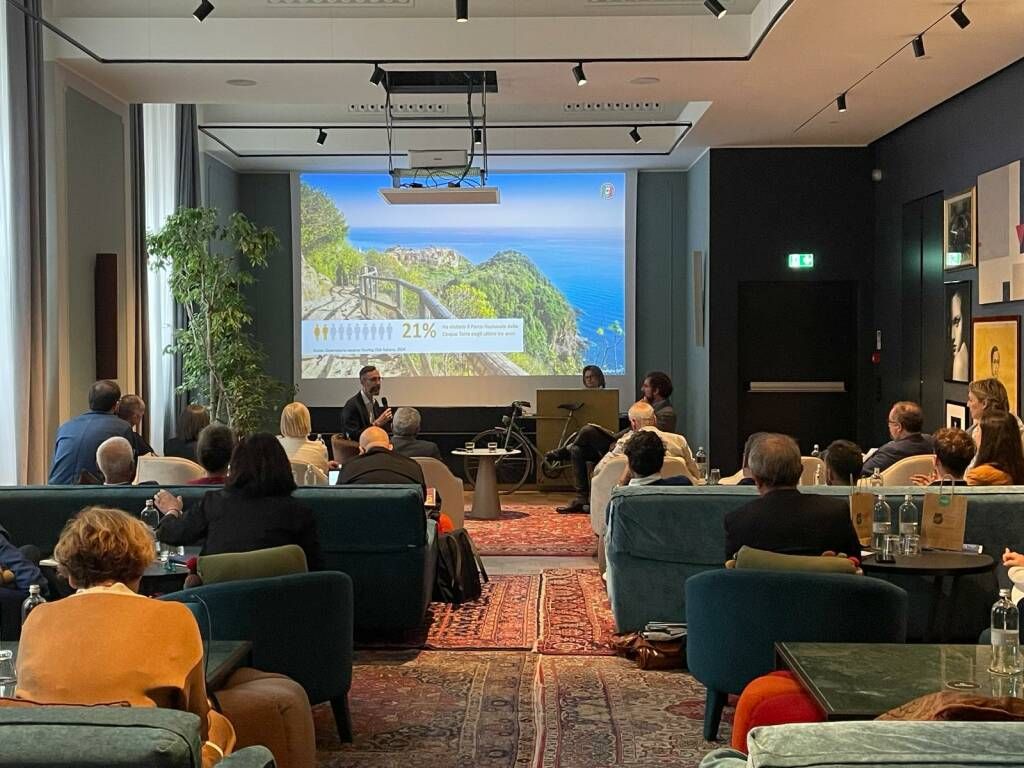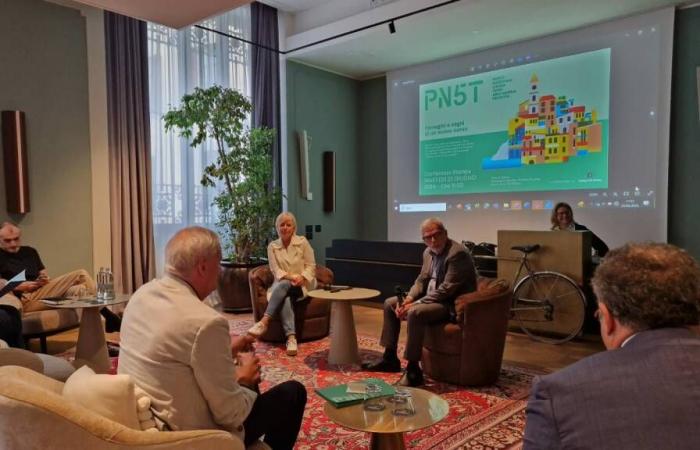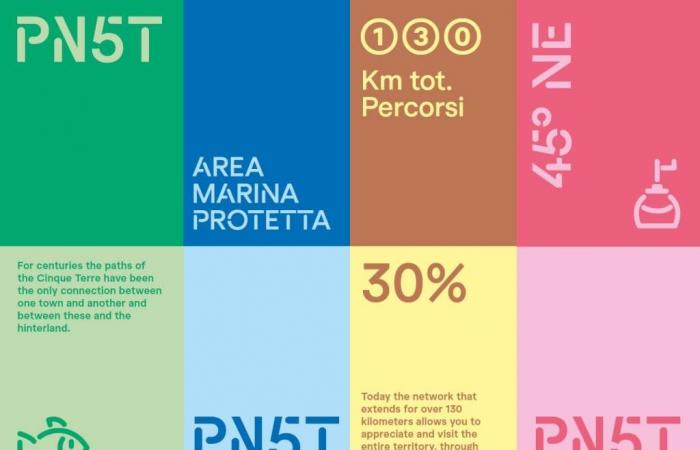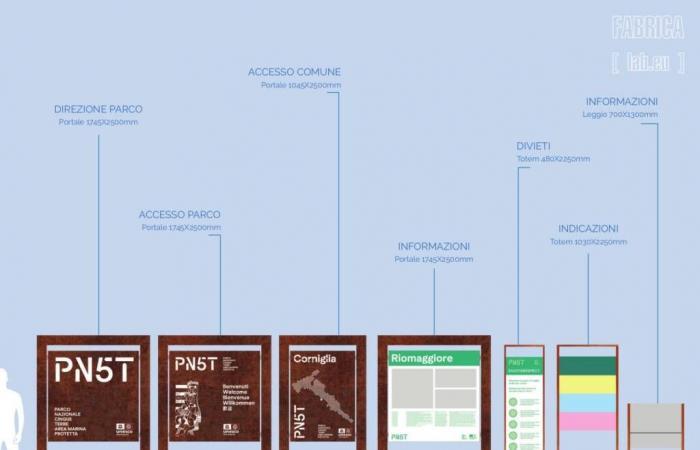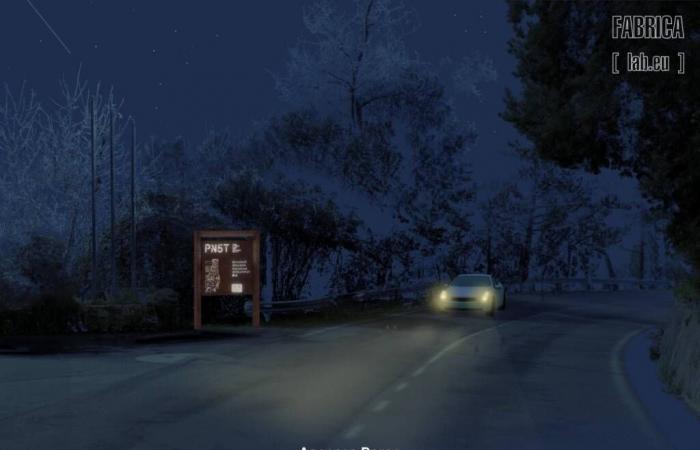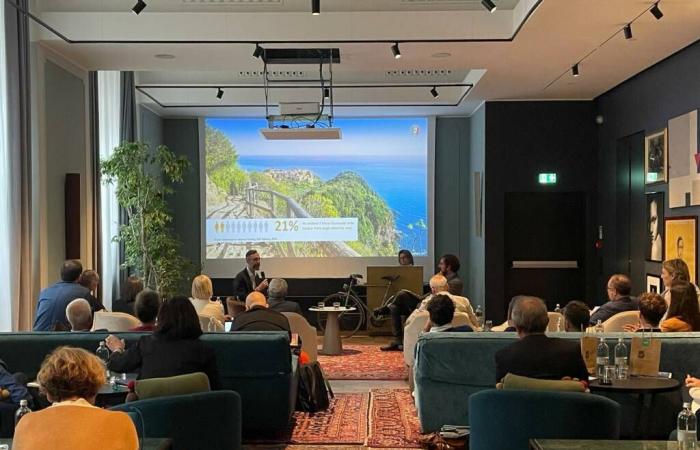With the presentation of the new visual image, the strategic identity communication plan of the PN5T begins with the aim of making the Park’s brand more immediate, effective and innovative, which will be expressed in projects and initiatives dedicated to the millions of guests who choose it every year as a travel destination.
Illustrating the new projects relating to the image of the Cinque Terre National Park are the exponents of the realities that collaborated on the project, such as Davide Di Gennaro, art director of the Tomo Tomo studio, Daniela Cappelletti architect of the Fabrica design company and, for the Center Studies Touring Club Italiano Matteo Montebelli, responsible for Analysis and Publications. Welcoming to the venue was Giulio Lattanzi, general director of the Touring Club Italiano, an association which this year celebrates its first 130 years of activity.
This morning, in the historic headquarters of the Italian Touring Club in the heart of Milan, several new features were presented: the new visual image of the Park, which effectively and concisely describes the complexity of this extraordinary territory; an impressive “Wayfinding” signage project, which uses images, signs and maps to facilitate orientation and manage tourist flows; the international “Cinque Terre Photo Award” competition, which will reward the best photography; and dedicated research by the Study Center of the Italian Touring Club.
Donatella Bianchi, president of the Cinque Terre National Park, declared: “Our territory confirms itself again in 2024 as one of the main tourist attractors in Italy, a destination for millions of visitors every year arriving from all over the world. Informing them and raising their awareness by providing them with information in a simple and effective way is imperative. Today more than ever, in an area like ours, the speed of engagement with users, even through images, is fundamental, they must know that they are in a national park, a UNESCO site, that they have entered a place where protection of nature, landscape, ancient values linked to heroic agriculture are strongly connected. Our Wayfinding project is based on a new vision of hospitality and has responsible use as its main objective. It was designed to restore visitor awareness through redesigned signage regarding the access points to the Park and the international nature of the visitors, together with a new visual image they are the tool to convey our idea of the Park”.
“We asked the Touring Club to interview a significant sample of travelers on their perception of the Cinque Terre and the National Park – continued Bianchi -: a picture emerged that was consistent with the information and protection efforts we have put in place in recent years: over 78% of the sample is aware that the Park hosts a marine protected area and that it is a UNESCO heritage site. The interviewees also proved to be strongly polarized on the importance of adopting measures to limit tourist flows within the Park to preserve its ecosystems. In the selfie season we then thought of a photographic contest to represent the other face of the Cinque Terre, an international photographic competition to shine the spotlight on local excellence and, in particular, on the value of biodiversity. In September the best international photography will be awarded with the Cinque Terre Photo Award“.
The new visual identity
From the design of master Lele Luzzati to the acronym PN5T.
The new visual identity of the Cinque Terre National Park is based on a system of signs designed to be visually powerful, authoritative and functional, capable of describing all the complexity of this extraordinary territory.
At the heart of this system is a new typeface and the acronym “PN5T”, whose letters are formally inspired by the trail signs of the Cinque Terre Park.
The acronym “PN5T” serves two main functions. On the one hand, it is an immediate typographical synthesis, contemporary and adaptable to the various media required by communication, both physical and digital: from signage to social media, from uniforms to merchandising. On the other hand, with its simplicity, it manages to visually communicate with the historical design of Emanuele Luzzati (previously used as the institution’s trademark), creating an ideal passage between the past and the future of the Park.
Added to this strong typographical element is a rich color palette, each referring to the four main areas of interest: the territory, the marine area, crops and human settlements. Furthermore, a system of icons and illustrations created specifically represent the most significant subjects, including the animals and plants typical of the area, immediately creating a visual link with the territory.
All these elements, dynamically coordinated, offer a rich and engaging visual story, capable of enhancing the beauty and diversity of the Cinque Terre and making the Park’s identity distinctive. The Tomo Tomo agency was called in to study the project.
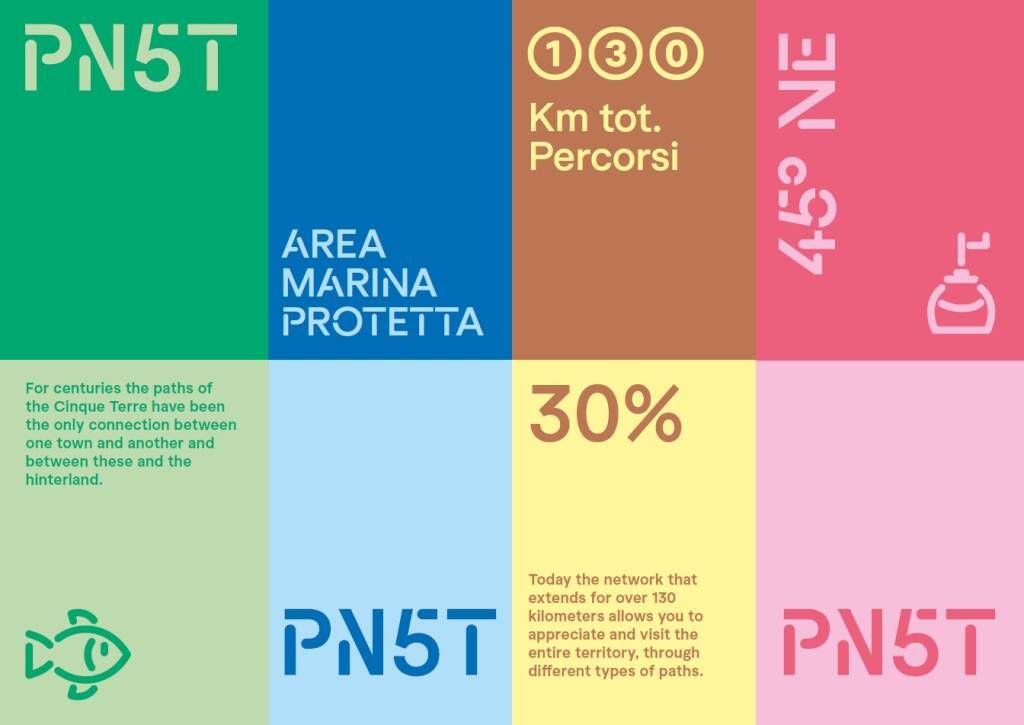
The “Wayfinding” project
Eight months of study and planning, designer materials and Corten steel, backlighting for over 90 signs located along 130 km of paths and access roads to the Park. From this summer to the end of the year, the Park’s signs will be completely reconditioned and renewed.
“Wayfinding” literally means “finding the way”; this term indicates a signage system which, through the use of images, signs and maps inserted in an environment, contributes to the fundamental aim of orienting people in the use of spaces.
The historic villages of the Cinque Terre National Park area are still connected to each other today by numerous paths and steep stairways that innervate the terraces created so that the naturally steep land, cultivated with vineyards and olive groves, could slope more gently towards the sea.
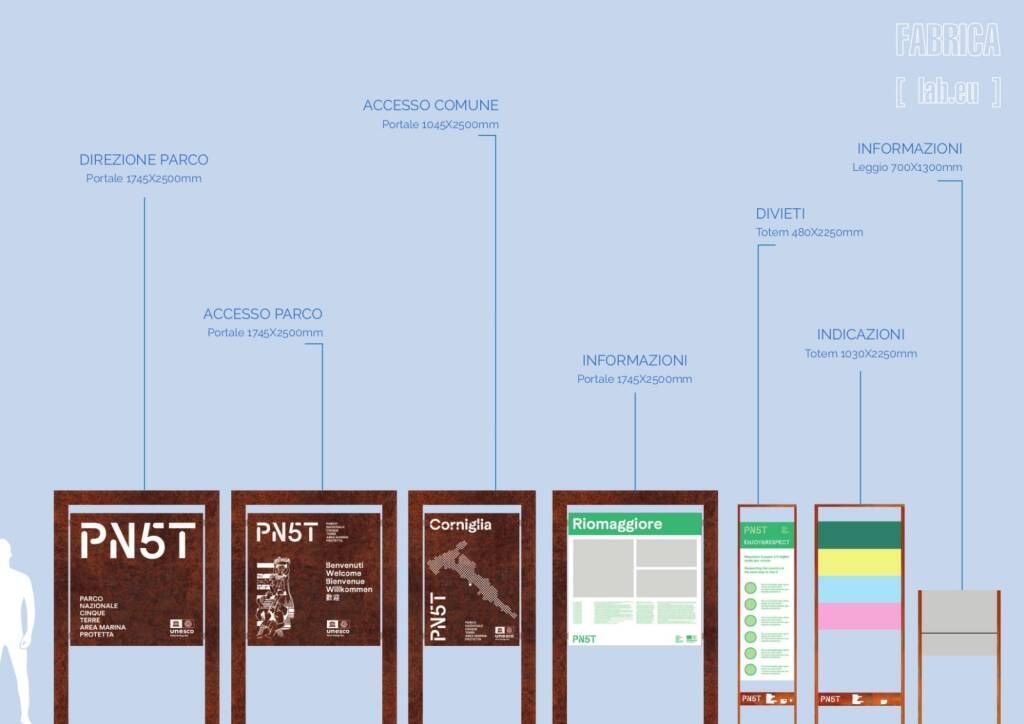
In such a harsh and difficult territory, this type of road system had a significant role in connecting the villages that remained in a condition of isolation for a long time until the railway was built in the mid-1800s, flanked only a century later by the carriage road.” Coastal road of the Cinque Terre”.
It is precisely from the study of these historical and morphological conditions that the Wayfinding project starts, wanted by the Park administration with the aim of reorganizing the information present and improving orientation on the historic pedestrian and vehicular streets that cross the areas of the 5 Terre, with the aim of welcoming visitors and organizing their flows through signage designed with coordinated image logic, using sustainable materials and recognizable and essential shapes.
The project as a whole consists of the creation of a single signage made up of approximately 90 new orientation, welcome, information and prohibition signs, designed in a simple and intuitive way and which demonstrates particular attention to the place in which it is placed also thanks to supports with a simple and low maintenance design in corten steel (portals, totems and lecterns) placed in the field in three successive phases and designed for easy identification and reading of information.
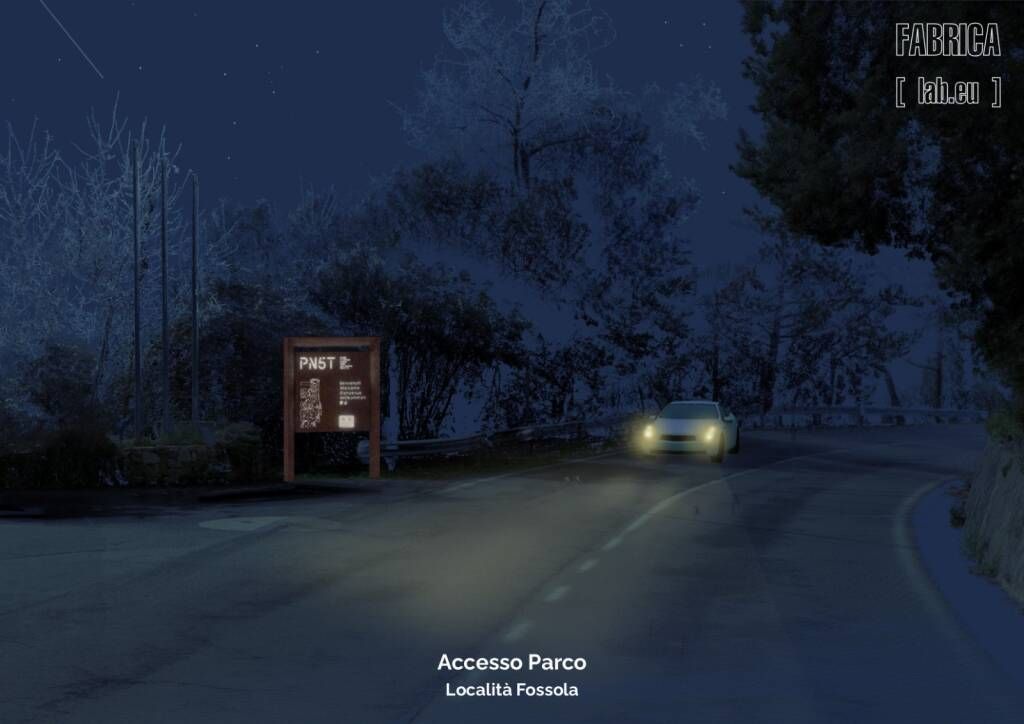
To identify the existing signage and for its reorganization and simplification, the Wayfinding and orientation project started from a preliminary phase of study of historical cartography and restrictions to extrapolate information on artistic, naturalistic and road emergencies. At the same time, the analysis of the current state of affairs was developed with extensive on-site checks and integrated by the use of modern 3D survey tools with laser scanners and geolocalization which made it possible to inventory the existing directional signs in order to eliminate redundant or exceeded, replace the old signs and place new ones.
With the creation of these new service and communication elements, it is expected to achieve the best possible result to obtain integration between the territory and its landscape perception: the construction typology of the new supports and their location will in fact represent an additional value to the areas of the Park, where the informative role of the individual elements will not intervene to modify the local landscape represented by the set of historic centers strongly and visually linked to the combined presence of the sea and the hillsides behind, but rather to integrate it making it more legible and easily usable.
Italian Touring Club Study Center
A questionnaire dedicated to the Cinque Terre to over 3,000 Italians.
Between 30 May and 3 June 2024, the Study Center of the Italian Touring Club conducted a survey to find out the opinions and travel behavior of the TCI community (over 300 thousand Italians, both members and non-members, who follow the activities of our foundation). The community is not representative of the Italian population as a whole but of that portion that sees travel as an opportunity not only for leisure but also for knowledge and discovery.
From the approximately 3 thousand questionnaires completed, it emerged that 21% of respondents had visited the Cinque Terre National Park in the last three years: this is a significant figure especially considering the fact that we are talking about an overall limited portion of territory. Secondly, we asked what aspects they identify the park with. The answers refer almost exclusively to the most iconic elements known not only to the national but also international public: paths with panoramic views (48%) and villages overlooking the sea (44%). The association with the sea (5%) and with the particular terraced landscape (4%) is of little importance. It can therefore be said that the symbolic image prevails over the geographical characteristics.
This interpretation seems supported by the fact that the vast majority of respondents know that the sea still has an important role for the Cinque Terre park: 79% are in fact aware that it also includes a marine area. There is also full awareness (78%) of the fact that the Cinque Terre are included in the UNESCO World Heritage List.
Finally, probably also in consideration of the uniqueness of the territory and the UNESCO recognition, there was a strong polarization of the respondents on the importance of adopting measures to limit tourist flows within the park to preserve the environment (score of 4.1 on a relevance scale between 1 and 5).
Travelers are therefore fully aware of situations of unsustainable tourism which, in addition to having effects on the environment, can also compromise the visit experience. Similar data, moreover, emerge in the same survey on 2024 holidays regarding the regulation of access to some beaches (with reservation and ticket) and the introduction of tickets for excursionists in cities of art, on the model of Venice: also the respondents agree with these interventions.
